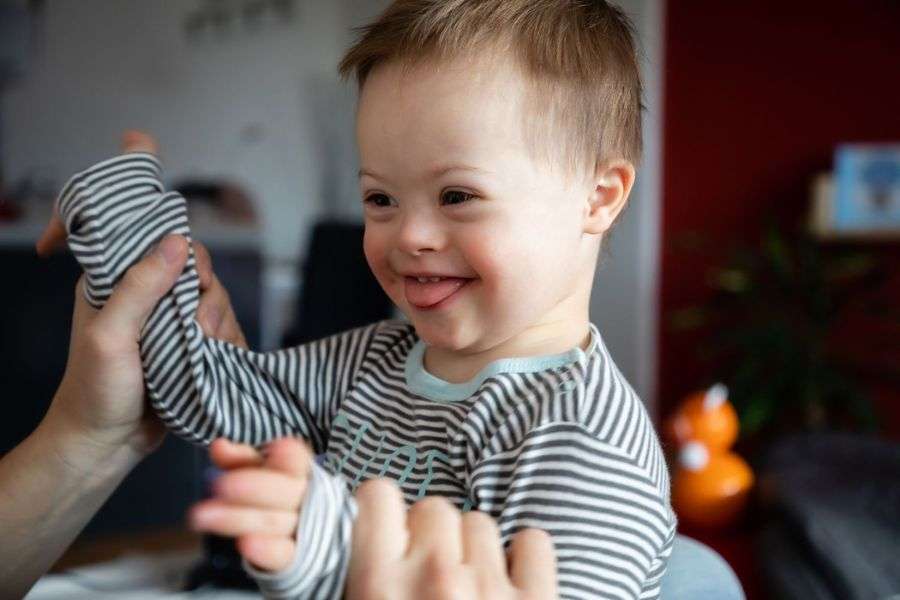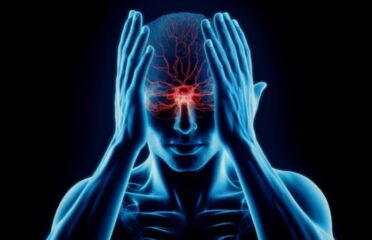Coffin Lowry Syndrome
Overview

Coffin-Lowry Syndrome (CLS) is a rare genetic disorder that affects both physical and intellectual development. It causes distinctive facial and skeletal features. Children with CLS commonly face developmental delays, including speech and motor skill delays.
At the same time, adults may encounter physical symptoms like joint stiffness and spinal curvature abnormalities. The syndrome stems from mutations in the RPS6KA3 gene on the X chromosome, which is crucial for cell growth and division regulation.
While CLS currently lacks a cure, early intervention and support can significantly improve affected individuals' quality of life, enabling them to lead fulfilling and independent lives.
Symptoms
• Intellectual disability: Coffin-Lowry syndrome causes moderate to severe intellectual disability.
• Delayed speech and language development: Children with Coffin-Lowry syndrome may experience delays in speech and language development.
• Distinctive facial features: Prominent forehead, widely spaced eyes, and a downturned mouth are noticeable facial features of Coffin-Lowry syndrome.
• Skeletal abnormalities: Coffin-Lowry syndrome can cause abnormally shaped fingers and hands, broad neck, curved spine, and abnormal curvature of fingers or toes.
• Behavioral challenges: Individuals with Coffin-Lowry syndrome may experience hyperactivity, aggression, and difficulty with impulse control, emotional regulation, and socialization.
• Seizures: Some individuals with Coffin-Lowry syndrome may experience mild to severe seizures caused by abnormal brain activity.
Causes & Risks
• Coffin-Lowry Syndrome is a genetic disorder caused by mutations in the RPS6KA3 gene.
• It is inherited in an X-linked manner, predominantly affecting males due to having only one X chromosome.
• Females may be impacted but typically show milder symptoms and may be carriers if they have one mutated X chromosome.
• The disorder manifests with intellectual disability, delayed development, and distinct facial features like a prominent forehead, wide-set eyes, and a wide mouth with an apparent lower lip.
• Currently, there is no cure for Coffin-Lowry Syndrome.
• Timely intervention and treatment can effectively manage symptoms and enhance the overall quality of life for individuals with the disorder.
Test & Diagnosis
• Physical examination to assess facial features, skeletal abnormalities, and overall development.
• Review of medical and family history to identify potential patterns and risk factors.
• DNA testing to identify mutations in the RPS6KA3 gene linked to Coffin-Lowry Syndrome.
• Molecular genetic testing techniques like PCR or sequencing.
• Karyotype analysis to examine chromosome number and structure.
• X-rays or imaging studies to identify skeletal anomalies.
Treatment
• Coffin-Lowry Syndrome is a genetic disorder without a cure.
• The primary goal of treatment is to effectively manage symptoms and enhance the patient's quality of life.
• Early therapy programs, like speech and occupational therapy, improve communication and daily living skills.
• Behavioral and educational support addresses intellectual and developmental challenges.
• Support assists in overcoming learning difficulties and improving social interaction.
• Individuals with Coffin-Lowry Syndrome can lead fulfilling lives and reach their full potential with interventions and support.
Living With
Coffin-Lowry Syndrome is a genetic disorder that affects many aspects of an individual's development, including cognitive abilities, physical appearance, and behavior. However, with appropriate support and interventions, individuals with this condition can lead fulfilling lives.
Regular medical check-ups and ongoing therapies are essential to monitor and manage potential health issues effectively. Early intervention programs, including speech and occupational therapy, can also help improve communication skills and fine motor abilities.
As with any condition, a supportive environment and access to resources are crucial for individuals with Coffin-Lowry Syndrome to reach their full potential and thrive.
Complications
• Common complications: behavioral challenges, aggression, and seizures, affecting both individuals and caregivers.
• Seizures require careful management.
• Skeletal abnormalities may cause joint problems, leading to pain and discomfort.
• Monitoring and managing complications are essential for improving health and well-being.
• With appropriate care and support, individuals with Coffin-Lowry syndrome can lead fulfilling lives.
• They can achieve their full potential with proper attention and assistance.

The Content is not intended to be a substitute for professional medical advice, diagnosis, or treatment. Always seek the advice of your physician or other qualified health provider with any questions you may have regarding a medical condition.
Know more about
Our Healthcare Planner
Personal Health Planner at BNC is a support staff who listens to your concerns and connects you with a Neuro Care provider. They prioritize your needs and create a trusting relationship between you and the provider.
Three fundamental values we can assure you:
1. Personalized Healthcare.
2. Most advanced robotic therapies
3. Transparent pricing





